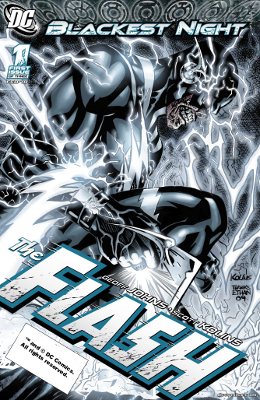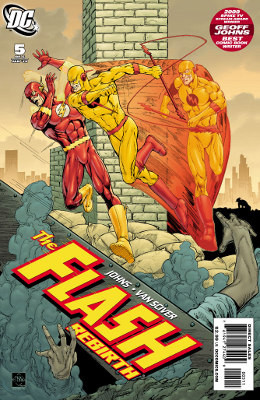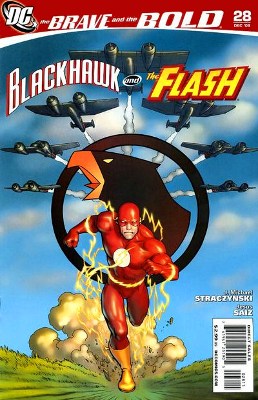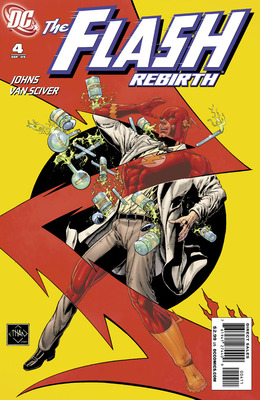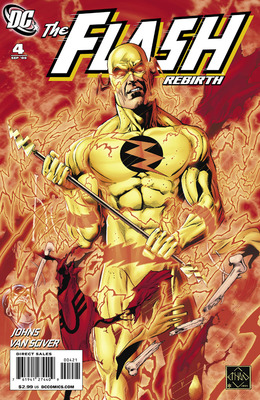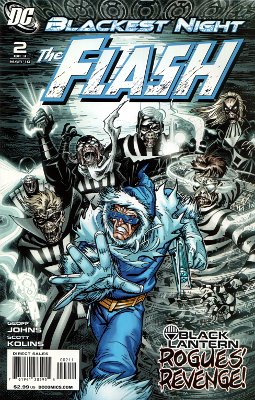
If there’s one thing that best describes Geoff Johns and Scott Kolins’ Blackest Night: The Flash #2, it’s “caught in the middle.” It’s the middle of a three-part story. It takes place between chapters of a larger story. It fits between the end of one Flash series and the beginning of another. It’s about people caught between life and death.
It’s also about mirror images, both in terms of opposites and in terms of forcing characters to look at themselves.
Unfortunately, it looks like this miniseries isn’t going to stand on its own very well, for the simple reason that it’s not a self-contained chapter of Blackest Night. Each issue is interleaved within other chapters of the larger story. The first issue brought readers up to speed with Blackest Night #4. This one doesn’t pick up where the last issue left off, but skips ahead and has to recap a couple of major events from Blackest Night #5 & #6.
That may be a big part of why I liked the Rogues’ story a lot better than the Flash’s: their story actually does seem to be a solid story, not a loose collection of scenes that fit between panels in another series. In that way, it reminds me a lot of Battlestar Galactica: The Plan.
Of course, another reason I liked the Rogues’ story is that it’s hard to go wrong with Geoff Johns and Scott Kolins on the Rogues. As I mentioned last time, Johns’ grim-and-gritty storytelling and Kolins’ angular art style are perfectly suited for the hardened Central/Keystone criminals…and for the undead Black Lanterns.
And now…it’s spoiler time! Continue reading

